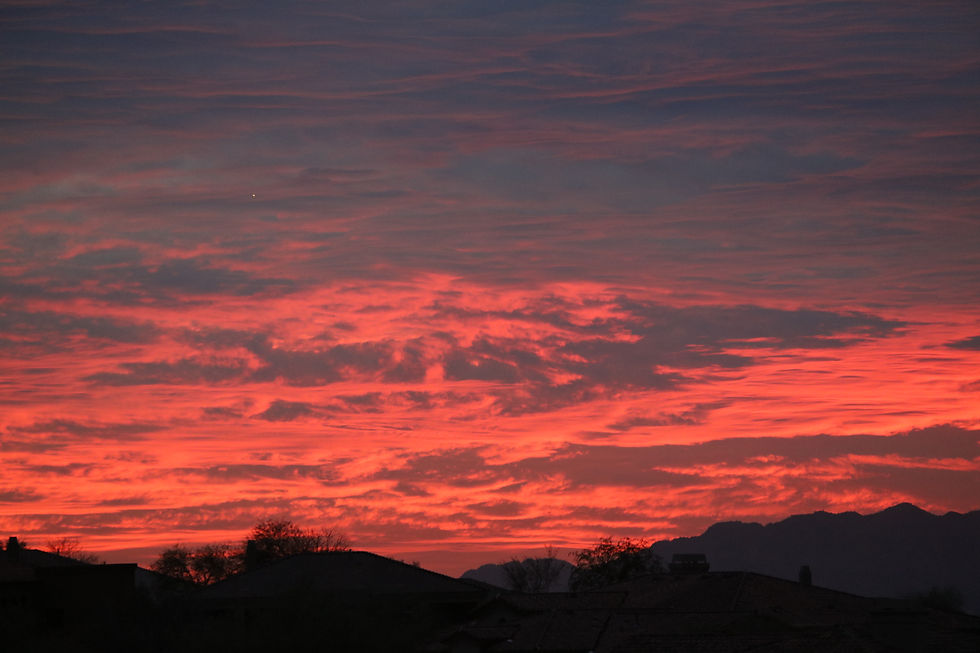Why are Arizona sunsets so amazing?
- Deborah Kade
- Jan 23, 2021
- 2 min read
Have you ever wondered why Arizona sunsets are so amazing? The scientific answer is actually pretty interesting and quite simple. It has a lot to do with the ecosystem, landscape, and something called scattering. "Small particles and molecules found in the atmosphere change the direction of light rays as the sun goes up or down. The color of the scattered light is determined by the size of the molecule or particle and the actual wavelength of light. Scattering affects the color of light coming from the sky but the exact color has more to do with wavelength of the light and the size of the particles. Because Arizona is generally dry, dust particles are able to float effortlessly on the breeze so there are many of them available for scattering. More particles equal more color."
All wavelengths of light are scattered but not all wavelengths are scattered equally. Blue and violet have a short wavelength that is scattered more easily by molecules than other colors on the spectrum.
Sunlight during a sunset or sunrise has a lot more air to travel through since the sun is low on the horizon.
This means it also has more molecules to scatter blue and violet light away from our eyes, and out of our line of sight. The other colors on the spectrum continue on their way to our eyes. This is why the sunsets often are red, orange, and yellow.
The sunlight seen very early or late in the day is viewed through more of the atmosphere than at midday because of the angle of our spot on Earth in relation to the sun. Because of that angle, the light we see may be filtered through particles hundreds of miles away.
Light is made up of different colors and that particles in the air, such as dust and moisture, can filter out some of those colors. In the case of someone seeing an orange or red sky, certain particulates, whether dust or other things in the air, are filtering out the blues in the spectrum of light. What you see are more oranges and reds and yellows at sunset.
Some of the more spectacular images often feature the light being reflected off high clouds.
The vast amount of loose soil gracing our state means any day has the potential to throw out an amazing array of colors as the sun breaks the horizon. We know that loose particles and molecules in the air cause scattering. Wind gets these particles up from their resting places. Windy days inspire the movement of particles from their sedimentary state so more of them are available in the sky to scatter light. During the summer monsoon season, wind creates a perfect atmosphere for the amazingly colorful Arizona sunsets we all appreciate.
Pollutants and dust do not enhance the brilliance of a sunset.
This month, I have particularly enjoyed photographing the sunsets from the house.






















The white dot in the sky is a plane landing at Scottsdale Airport.



















Comments